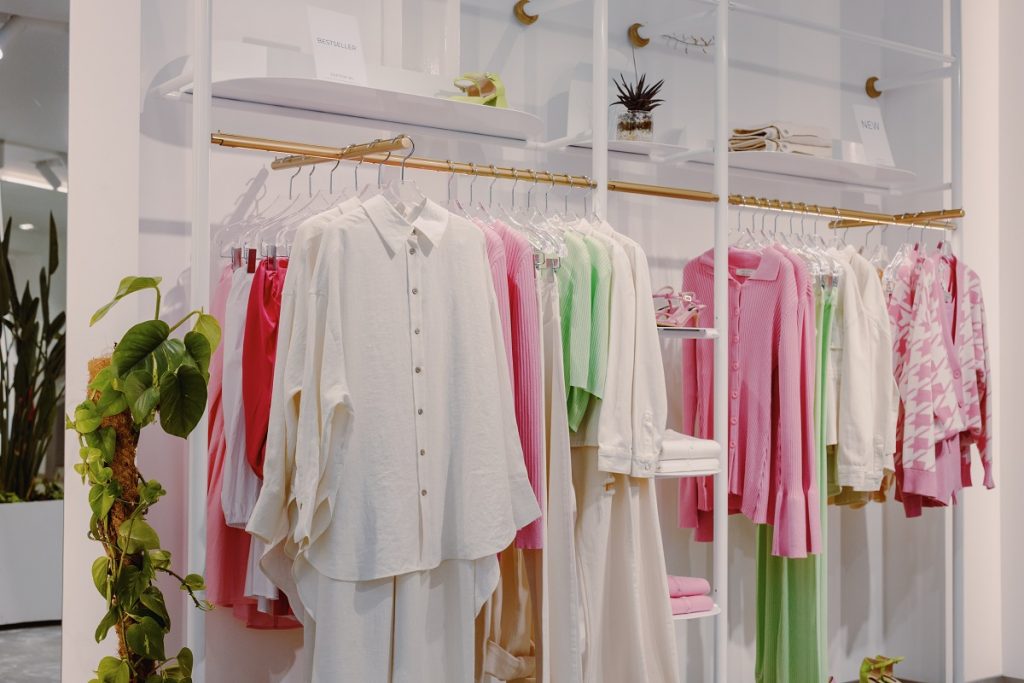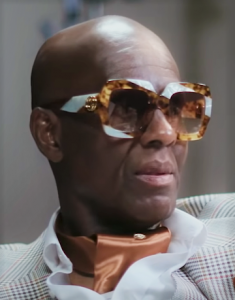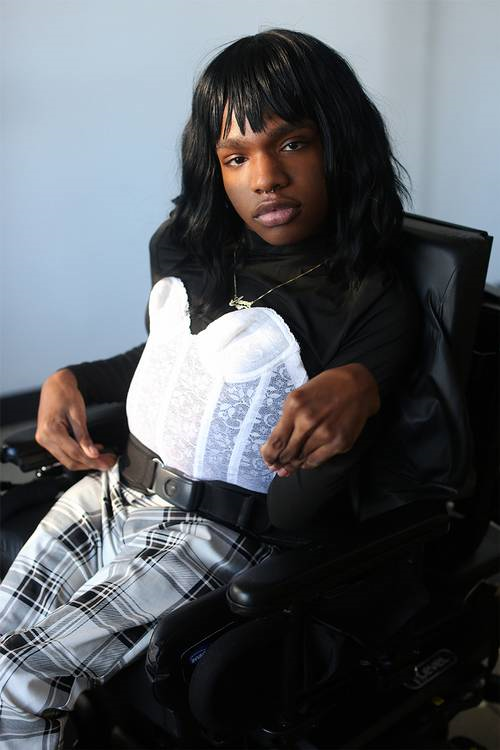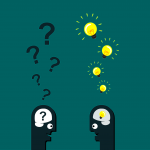3 Identity, Social Justice, and Dress
Module Learning Objectives (MLO)
In this chapter, you will
- MLO 3.1 Identify foundational concepts related to social justice, identity, and dress. [CLO 1]
- MLO 3.2 Identify driving forces of transformative social change. [CLO 5]
- MLO 3.3 Articulate your own positionalities. [CLO 4]
- MLO 3.4 Reflect on your progress toward development of empathy related to social justice issues, identity, and dress. [CLO 4]
- MLO 3.5 Examine social justice issues in the fashion industry.
Social Justice
Social justice is the equal distribution of privilege, opportunities, and wealth. Social injustice, then, occurs when there is unequal distribution of privilege, opportunities, and wealth. In the current US society, there is a significant imbalance in the distribution of privilege, opportunities, and wealth.
Required Reading
Ornstein, A. C. (2017) Social Justice: History, Purpose and Meaning. Society 54,541–548 https://doi.org/10.1007/s12115-017-0188-8.
Inequity and the United States

The gender pay gap is one example of inequity in the United States. Studies have demonstrated that when women and men perform the same jobs, women, on average, are paid less. The gender pay gap varies across industries, but women who are financial managers, physicians, accountants, retail sales workers, registered nurses, lawyers, education administrators, and chief executives earn between 65 and 92% of what men earn for performing the same job responsibilities (AAUW, 2021); the only differentiating factor is their gender. The fashion industry also suffers from gender inequality. While numerous women working in the fashion industry, recent research shows that the highest paid employees in the fashion industry were men, and about 80% of the industry’s executives were men (The Fashion Law, 2018). So, while female employees have dominated the fashion industry and women’s clothing has higher sales than men’s clothing, men more often occupy the industry’s higher-paying jobs (Bain, 2018).
Racial inequality, another example of the unequal distribution of privilege (Inequity.org), is still a significant issue in the United States. However, many white people feel that racism or racial inequality is not a significant issue in 2019 (Pew Research Center, 2019).

Despite the progress since the abolition of slavery and Jim Crow laws, Black people are still at significant disadvantage on many fronts (Gunn, 2018). For example, one study found that when researchers sent résumés with either African American– or white-sounding names, candidates with white-sounding names needed to send about 10 résumés to obtain a single callback, whereas candidates with African American–sounding names had to send an average of 15 resumes to obtain a single call-back (NBER, 2018).
Racial inequality can also be found within the fashion industry. While there have been numerous successful Black fashion designers, the industry also has systemic racial inequality issues (Deleon et al., 2020; Segran, 2018). For example, most fashion models are white, not people of color; while this inequality has lessened over time, the industry still most often casts white models to represent the ideal of beauty (Tai, 2018).
Racial inequality is still a significant issue in the United States and an example of the unequal distribution of privilege (Inequity.org). However, in 2019, many white people believed racism or racial inequality is not a significant issue (Pew Research Center, 2019).
Privilege
These inequities are interconnected with the concept of privilege. The resources at the links below discuss privilege and the ways it intersects with varying identities.
This short video explains privilege and how it relates to power and oppression.
To view a transcript for this video, download this file: Power Privilege and Oppression Video Transcript [DOC]
Intersectionality
Kimberly Crenshaw, a pioneering scholar, discussed intersectionality in the 1990s. The resource at the link below, provided by Rider University, discusses the concepts of privilege and intersectionality.
In this short film, Crenshaw discusses intersectionality and why one needs it when examining experiences of different individuals.
To view a transcript for the video above, download this file: The Urgency of Intersectionality Video Transcript [DOC]
In this short film, the individuals engage in a privilege walk. It is a visual of how privilege affects people differently depending on their intersectional identities.
To view a transcript for the video above, download this file: What is Privilege Video Transcript [DOC]
Stereotyping
We all stereotype. Stereotyping is a form of classification to help make sense of the complex world based on limited information. Through stereotyping, we infer a network of characteristics of a person. Stereotyping is learned through direct experience, hearsay, and cultural experience (media).
Dangers of Stereotyping
While stereotyping can help us make sense of the world, it carries significant dangers.
- Blinder effect: one cue blinds the perceiver to a person’s other qualities.
- Prejudice: one can develop a rigid use of typing in which the perceiver ignores information that conflicts with the stereotype the perceiver holds
Implicit Bias
Stereotyping can also be connected to implicit bias. According to a research center at the Ohio State University, implicit bias “refers to the attitudes or stereotypes that affect our understanding, actions, and decisions in an unconscious manner.” They are enacted “without an individual’s awareness or intentional control.” These implicit biases have been learned over time, yet they are malleable and can be unlearned. Therefore, even if individuals have unconscious biases toward groups of people, these attitudes are able to be changed.
One fashion-related example of this bias is that the market has rarely made accessible or adaptive clothing available for people with disabilities (Schmidt, 2018). This does not necessarily mean that the fashion industry professionals do not like people with disabilities or do not think they should have clothing. It is more likely that people have an unconscious bias toward people with disabilities and are not thinking about their needs or interests as individuals. Until very recently, the fashion industry has also lacked models with visible disabilities in its fashion advertisements (Falquez, 2018).
Implicit Bias Association Test
Harvard University has an ongoing Implicit Association test (Project Implicit), which measures the strength of association between concepts (Black people, gay people) and evaluations (good, bad) or stereotypes (athletic, clumsy).
To view a transcript for the video above, download this file: Implicit Bias Video Transcript [DOC]
Microaggressions
- Microaggressions are small slights that the “majority” make to members of marginalized groups without noticing, often due to their implicit biases.
- People often commit microagressions out of ignorance or surprise at being in the presence of someone who appears different than they are.
- Both individuals and institutions may perform microaggressions. Many surveys at institutions are full of microaggressions.
Watch this short film demonstrating microaggressions. Please note that between 1:07 and 1:08 in the film, the phrase “fucking annoying” is used and a few seconds before that “goddamn it” is used.
To view a transcript for the video above, download this file: Microaggressions Video Transcript [DOC]
How do we reduce implicit bias?
There are numerous ways to reduce implicit bias. In one Psychology Today article, the authors discuss how while awareness of one’s biases is a first step, it is not enough (Tropp & Godsil, 2015). They explain that practices to significantly reduce bias should include exposing people to counter-stereotypic examples, developing an understanding of the out-group member, and engaging in positive interactions with members of the out-group. In a large-scale study, scholars reported that while interventions aimed at reducing bias had good intentions, they did not always work to reduce people’s biases and that to be able to determine the best methods to reduce bias more data was needed (Gerald et al., 2019).
Empathy
Empathy refers to the ability to understand individuals who are in outgroups, or individuals who are a part of groups that we do not self-identify with or belong to (Molenberghs, 2017). That is, empathy is the ability to understand the experiences or expressions of individuals who are not like us.
Empathy
- is an approach toward greater understanding of diversity.
- involves seeking to understand others by considering their backgrounds and life situations.
- does not require liking or approving of someone.
- assists in avoiding microaggressions.
If you were in charge of selecting models for a fashion photo shoot and you knew people with disabilities feel poorly about themselves when they do not see themselves represented, would you make your hiring decisions with this in mind (Feldman, 2017)? Understanding others’ experiences and listening to their stories can help increase empathy.

A Lens of Individual and Systemic Oppression
A lens is a means of looking at a particular idea, event, and/or experience. In this course, we discuss oppression, and one can evaluate oppression using different lenses: individual, interpersonal, and systemic lenses.
- individual oppression in the fashion system that is conscious: A person’s religion informs their beliefs that transgender people are wrong, and thus they believe that transgender people should not embrace their identity through dress. For instance, they do not think that a person assigned female at birth should wear a chest binder to affirm their gender identity as a man.
- individual oppression in the fashion system that is unconscious: A person is outwardly supportive of transgender people and the ways transgender people express their gender through fashion. However, in one instance, the person is creating a fashion line of undergarments and does not actively think about the needs of transgender people, such as producing chest binders.
- Interpersonal oppression in the fashion system: A person is outwardly supportive of transgender people and the ways they express their gender through fashion; however, this person often will stare at a transgender-appearing person because they are confused by their appearance.
- Systemic oppression in the fashion system that is institutional: A fashion brand produces undergarments, and in its practices it has have never produced garments that cater to transgender individuals. It only produces products that are for cisgender people and markets them this way.
- Systemic oppression in the fashion system that is structural: Throughout the entire fashion industry over time, there are no fashion brands that produce undergarments that cater to the needs of transgender individuals. Therefore, transgender individuals who want to affirm their gender identity through dress, such as wearing a chest binder, do not have options to do so.
Transformative Social Change
Review these resources on how to engage in transformative social change:
- Transformative Social Change Wiki (P2PF Wiki).
- Transformative Justice, Explained in Teen Vogue (Tran, 2018).
Focused Example: For Everyone Collective
The For Everyone Collective, in Grand Rapids, Michigan, uses T-shirt activism to advocate for prison abolition. On its website, it describes itself as “worker owned by a multiracial group of people impacted by incarceration. Our only non-impacted employee-owner is our founder, who created Forgive Everyone to raise money for the abolitionist movement” (For Everyone Co., 2021).
This organization centers social justice philosophies in all of its processes, from its production practices, employing formerly incarcerated people, to its shared-ownership business model. Its employees earn at least $15 an hour and are provided medical benefits, and it employs currently incarcerated artists to design T-shirts while funneling all of its profits into prison abolition education, empowerment, and justice.
In addition to requesting support for its work through product sales, the For Everyone Collective seeks to be “a central hub for advocacy and activism resources for activists in criminal justice reform, prison abolition, and transformative justice work.”

Identity, Social Justice, and Dress Case Study
Step One: Become familiar with the case study.
- The case study attached below is a Word document and can be downloaded. It includes the task, evaluation, and template for the case study:
Identity Social Justice and Dress Case Study [DOC]
Step Two: Submit your complete assignment on Canvas.
- Format your document.
- Remember to check the submission against the rubric.

